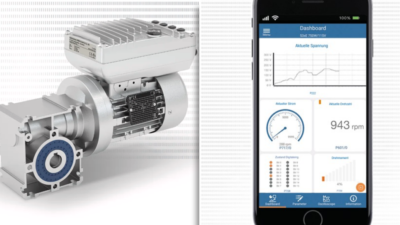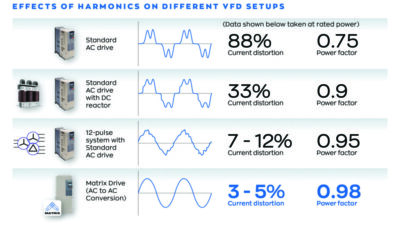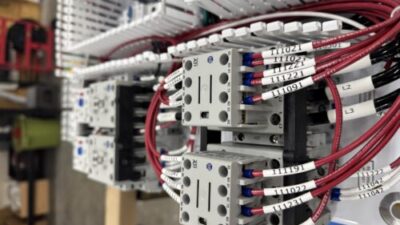Debate over the current U.S. energy situation and government policy rages in all political forums and news media. These discussions generally examine the problem on a large scale but do not consider what's going on locally. Just as a forest is made of individual trees, the larger energy industry is composed of individual plants.
Debate over the current U.S. energy situation and government policy rages in all political forums and news media. These discussions generally examine the problem on a large scale but do not consider what’s going on locally. Just as a forest is made of individual trees, the larger energy industry is composed of individual plants. So, posing the question another way, can engineers solve the energy crisis at the plant level?
Electrical generation
The sophistication of control systems in U.S. generating plants is generally very high due to the competitive nature of the industry. Cyrus Taft, chief engineer of the instrumentation and control center of the Electric Power Research Institute (EPRI), says he believes that improvement is possible, but adds it will be very small. “You can’t just adjust the system and get another 3% or 4%. The limit will be maybe 1%, but even that can amount to a lot of money,” he says.
From his experience, most plants have changed to digital systems with the exception of nuclear units. “There is movement toward digital controls in nuclear plants with maybe 20% converted, but the NRC has slowed things down,” says Taft. “Functionally, analog systems can control the plant, but they’re getting old and components are harder to replace.”
More than half of the electricity in the U.S. is generated by burning coal. Plants are scattered nationwide and vary widely in age and technology. Cost issues have forced inefficient operations to close or be dispatched only when absolutely necessary. Plant operators also have two major areas of concern in that they must balance: efficiency and emission controls. Making an improvement in one may harm the other.
“Sometimes it isn’t about efficiency,” observed Mark Beckett of GE’s optimization and control group. “In the middle of the summer during peak demand periods, a power plant may take steps to increase production or ensure reliability over efficiency and emissions.”
Being answerable to the U.S. Environmental Protection Agency (EPA) has its own set of constraints. “There are substantial roadblocks to improving technology within a plant from the regulatory standpoint,” says Doug Carter with CURC (Coal Utilization Research Council). “Increases in efficiency can trip a new source review if a plant is dispatched more.” As a result, utilities tend to be cautious about changing anything the EPA has already blessed. Because significant operational and control changes must be reported to the EPA, engineers like to stay below the reporting thresholds.
Nonetheless, improvements still can be gained from more sophisticated control and instrumentation technology, particularly in the furnace itself. Ability to measure pulverized coal and air flow to individual burners is still inadequate. In the absence of precise data, operators have to depend on models to optimize combustion. Solving this data void, combined with more sophisticated combustion analysis, can help maintain the most efficient firing while minimizing conditions that contribute to NOx formation. Even soot blowing technology has become smarter, helping maintain optimal ash deposits on boiler tubes.
While these steps can help, achieving major increases in efficiency and output will demand new plants with newer or at least different technology. U.S. electric utility boilers tend to operate at subcritical levels with typical steam pressures around 2,400 psi. European utilities more frequently use supercritical boilers running at 3,500 psi to gain efficiency. “We will see more application of supercritical technology in the U.S.,” says Carter. “The technology for this has existed for decades but has not been used here. There are even greater efficiencies to be gained from ultra-supercritical boilers, but materials don’t exist entirely in all areas to handle that level.”
Ultra-supercritical boilers operating at 4,500 psi and higher demand materials, construction methods, and instrumentation innovations (for boilers and turbines) still in development. This will advance engineering capabilities.
While coal is still king, new power plants are shifting overwhelmingly toward natural gas technology. Since 2000, about 218,000 MW of new gas-fired capacity has been added, eclipsing all other technologies in growth. This growth is expected to decrease in the coming years as the industry regains its balance, but the increased demand for gas by utilities will remain.
“Demand growth, supply constraints, and the resulting high and volatile prices are our biggest challenges in the United States,” says Stephen E. Ewing, chairman of the American Gas Association. “What we are producing and what we are capable of producing are in lockstep. No longer can increased demand be met by opening a valve a few more turns. The valves are wide open.”
Better delivery
Once electricity is generated, it still has to get to end-users through the transmission grid. Given the high level of interconnectedness, keeping this running efficiently and reliably depends on careful monitoring and control. Ability to gather critical performance data throughout has improved with wide area monitoring (WAM). Using strategically placed phasor-measurement units around the system provides more complete information more quickly. Bob Fesmire, a manager at ABB, one of the system providers, observed, “Data are much more accurate and reliable. Data reaches the control center with GPS coordinates and a time stamp in real time or near real time, but WAM systems haven’t been implemented all that widely yet,” he says.
Utilities have also gained efficiency by consolidating distribution oversight systems. Historically, many utilities have separated functions such as distribution management from outage tracking, even though they monitor many of the same things. Now those are merging in a way that provides more comprehensive service without redundancies.
Oil refining
Current gasoline prices and the hurricanes of last summer have pointed out the fragility of U.S. oil supply. There was much hand wringing about refining capabilities since a new refinery has not been built in the U.S. in 30 years. While that is technically true, upgrades on existing sites have had much the same effect as installing new greenfield plants, according to Jeff Hazle technical director of the National Petroleum Refiners Association.
Even so, “our existing hardware is pretty maxed-out,” says Hazle. “With changes to reduce sulfur and now benzene control coming, we will need more hardware to increase capacity. All the easy de-bottlenecking has been done. Process control is going deeper into the plant, pushing the thought process farther, but that won’t provide a big boost. We’re squeezing that lemon pretty hard already. There won’t be an increase much beyond 1% without a major capital effort.”
Oil companies have to weigh the current situation against future projections as they plan new equipment. Industry analysts project that U.S. demand for oil will peak in 2020 based on consumption patterns and demographics. Right now, our domestic refining capacity is increasing at about 2% to 3% annually. As a result, current production of 17.3 million barrels per day will increase to at least 19 million barrels per day in five years.
Given the desirability of having refineries near the customers, most will be built in Asia in coming years. So even if demand slows in the U.S., it is likely to continue increasing worldwide.
Control technology helps
It seems that process control and instrumentation technology itself has pushed things about as far as they can go. Improvements will be incremental, with thoughtful upgrades proving cost-effective, but it will be difficult to increase or substantially change the nature of U.S. energy production without more fundamental changes in technologies.
The real challenges and opportunities for process control and instrumentation will come with development of alternative energy sources. The shift to wind, biofuels and other new approaches has already presented opportunities for innovative designers and producers, and these will only continue.
Industry’s cooperation with a comprehensive national energy policy will lay out the direction to the future.
Peter Welander, process industries editor, Control Engineering, [email protected] www.abb.com , www.aga.org , www.coal.org (CURC), www.epa.gov , www.epri.com , www.ge.com , www.npra.org
For sale: mechanical, motor businesses
Rockwell Automation Inc. put the “for sale” sign on its Dodge mechanical and Reliance Electric motors and motor repair services businesses. These producers of power transmission products and motors are part of the company’s Power Systems segment. Rockwell says it will retain the Reliance Electric and Reliance-branded drives and related parts and services within its global drives and customer service businesses.
Dodge and Reliance Electric, account for essentially all the revenue generated by Power Systems. For fiscal year 2006, the segment is forecast to generate about $1 billion in revenue and segment operating margins of around 15%.
The company does not expect to change its priorities for cash deployment, but says the sale will augment its focus on power, integrated control, and information solutions. In December 1994, Control Engineering reported that Rockwell purchased Reliance Electric for $1.6 billion.



